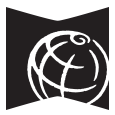Seattle Historic Postcard Collection
Preview up to 100 items from this collection below. Highlights of early 20th century Seattle, as depicted through our historic postcards. Cards include images of buildings, attractions and events from the 1900s to the 1960s along with messages between friends and family.
-
City Hall Park, Frye Hotel and Smith Tower, ca. 1915
Street view of City Hall Park, Frye Hotel, the King County Courthouse and Smith Tower. The Frye Hotel was constructed in 1911 and designed by the architects Charles H. Bebb and Louis L. Mendel. The project was funded by Seattle pioneer George F. Frye and his wife Louisa Denny Frye, for whom the hotel is named. The hotel was converted to low income housing in the 1970s. The Smith Tower opened in 1914 and was the tallest building in Seattle until the construction of the Space Needle in 1962. The tower was designed by the Gaggin and Gaggin architectural firm. The King County Courthouse opened in 1916 and was constructed by architect A. Warren Gould. Additional stories were eventually added to the five story structure seen here during renovations in the 1930s.
Identifier: spl_pc_00214
Date: 1915?
View this item -
4th Ave. and University St., ca. 1915
The White-Henry-Stuart Building (constructed 1908-1915 and demolished in 1974) appears on the right and the Cobb Building (completed in 1910) appears on the left.
Identifier: spl_pc_00203
Date: 1915?
View this item -
New Washington Hotel, ca. 1909
Transcribed from spl_pc_00802: "In the heart of the theatrical and shopping district. Seattle's leading commercial & tourist hotel, all rooms with private bath. Tariff $3.00 per day and up. J.C. Marmaduke, Manager H.R. Warner. Ass't. Manager."
Identifier: spl_pc_00823
Date: 1909?
View this item -
A Summer Home at Alki Point Washington, 1906
View of West Seattle residence at Alki Point with people posed on the front porch.
Identifier: spl_pc_00602
Date: 1906
View this item -
Central Building, ca. 1907
Designed by C.R. Aldrich, the Central Building was completed in 1907. At the time of construction, 3rd Ave. was being regraded to establish a more gentle slope and allow a retail core to take hold in the downtown area. The Central Building served several purposes, providing much needed office space for businesses.
Identifier: spl_pc_00231
Date: 1907?
View this item -
King Street Station, ca. 1906
During the early 1900s, there was increasing interest in connecting railroads with Seattle.The high demand and competition between railways resulted in two railway stations being built directly next to each other at 4th Avenue and Jackson Street. King Street Station (which is depicted in this postcard) was constructed in 1906 and can be distinguished by its tower. Union Station, originally known as the Oregon and Washington Station, was constructed in 1911. (Alternative names for Union Station include the Union Depot and the Northern Pacific Great Northern Depot.) Confusingly, both stations were sometimes referred to as "union stations" due to the fact that multiple railroad lines were shared within the same terminal. For a good example of the differences between Union Station and King Street Station see spl_pc_01011 where Union Station appears in the foreground and King Street Station appears in the background.
Identifier: spl_pc_01003
Date: 1906?
View this item -
View east from James St. and Yesler Way, ca. 1915
Transcribed from postcard: "Looking up James Street at the left. Yesler Way at the right from Pioneer Square. Showing the 42 Story L.C. Smith Building Seattle, U.S.A." The Seattle Hotel, which appears in the center of the image, was constructed in 1890. It replaced the Occidental Hotel which burned down in the fire of 1889. In 1891, the building served as home to the Seattle Public Library and was converted into an office building in the early 1900's. By 1961, the building was abandoned and later torn down and replaced with a parking garage. This instigated a historic preservation movement in the Pioneer Square area to preserve other historic buildings before they could be demolished. The Smith Tower, which appears in the background, was constructed in 1914 by the architecture firm Gaggin and Gaggin. It was the tallest building in Seattle until the construction of the Space Needle in 1962.
Identifier: spl_pc_00213
Date: 1915?
View this item -
Federal Building at 3rd Ave. and Union St., ca. 1909
Street view of the Federal Building in downtown Seattle (also known as the U.S. Court House, Custom House and Post Office Building). Construction on the Federal Building began in 1903 and ended in 1908. The building was located at the intersection of Union Street and Third Avenue, which was being regraded at the time. The Third Avenue regrade left a gap of four feet down to the new sidewalk which resulted in a new set of stairs being added to the building's exterior. The building was demolished in 1958.
Identifier: spl_pc_00410
Date: 1909?
View this item -
St. James Cathedral, ca. 1909
Transcribed from postcard: "St. James Cathedral. One of the most imposing and costly sacred edifices west of New York. The towers can be seen from any part of the city."
Identifier: spl_pc_00301
Date: 1909?
View this item -
Municipal News, v. 53, no. 18, Oct. 28, 1963
Page 138 articles discuss the Municipal League's civil rights report and the Open Housing campaign.
Identifier: spl_mn_818362_53_18
Date: 1963-10-28
View this item

